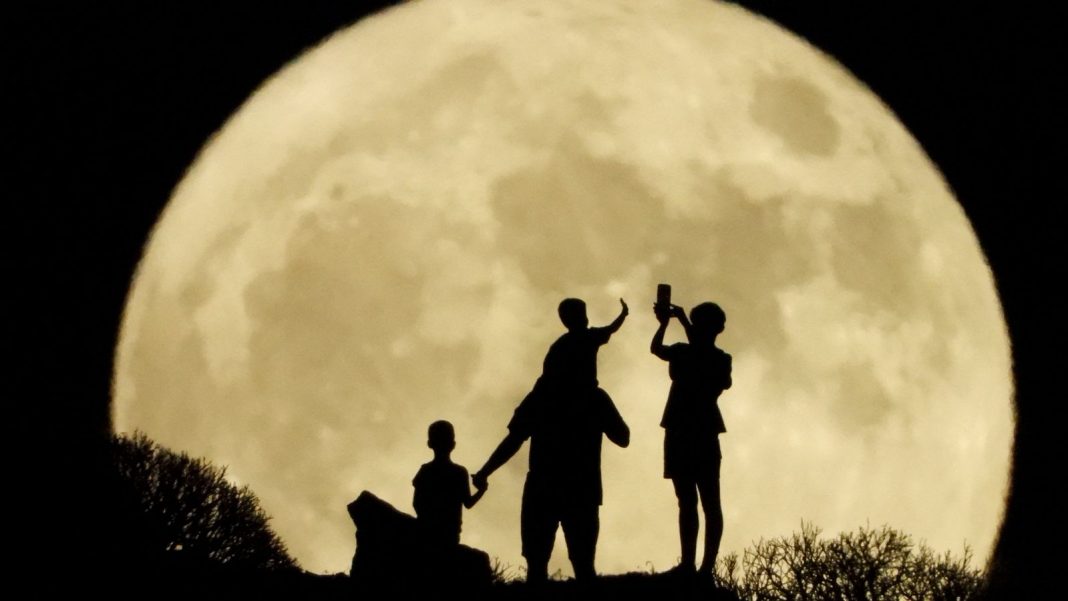Stargazers across the world have been enjoying the first of two rarely-seen supermoons in the space of a month.
Supermoons take place when a full moon is near its closest point to Earth, making it appear up to 14% bigger and 30% brighter compared to when it is furthest away.
It’s also known as a Sturgeon Moon due to the rise in numbers of that species of fish in North American lakes at this time of year.
A family in Arguineguin, on the island of Gran Canaria in Spain

The supermoon behind an air traffic control tower at Ben Gurion Airport near Tel Aviv
Though the phenomenon is rare, it will happen again on 30 August, when it will be even closer.
But after that, experts say we will have to wait until 2037 for the next one.

Skopje, North Macedonia
On Tuesday, the moon rose in the southeast from 222,159 miles (357,530km) away.
But in four weeks’ time, its distance from Earth is expected to be 222,043 miles (357,344km).

The supermoon behind a building in Angel’s Gate Park, Los Angeles. Pic: AP
That one, the second full moon in the same month, is also known as a blue moon.
The variation is because the moon orbits the Earth in an elliptical, or oval, shape, rather than a circular one, so its distance away varies over time.

The supermoon rises behind a minaret of a mosque in Beirut, Lebanon. Pic: AP

Women walk up a mountain in Spain
When the moon is at its furthest from us, it is normally about 252,088 miles (405,696km) away.







